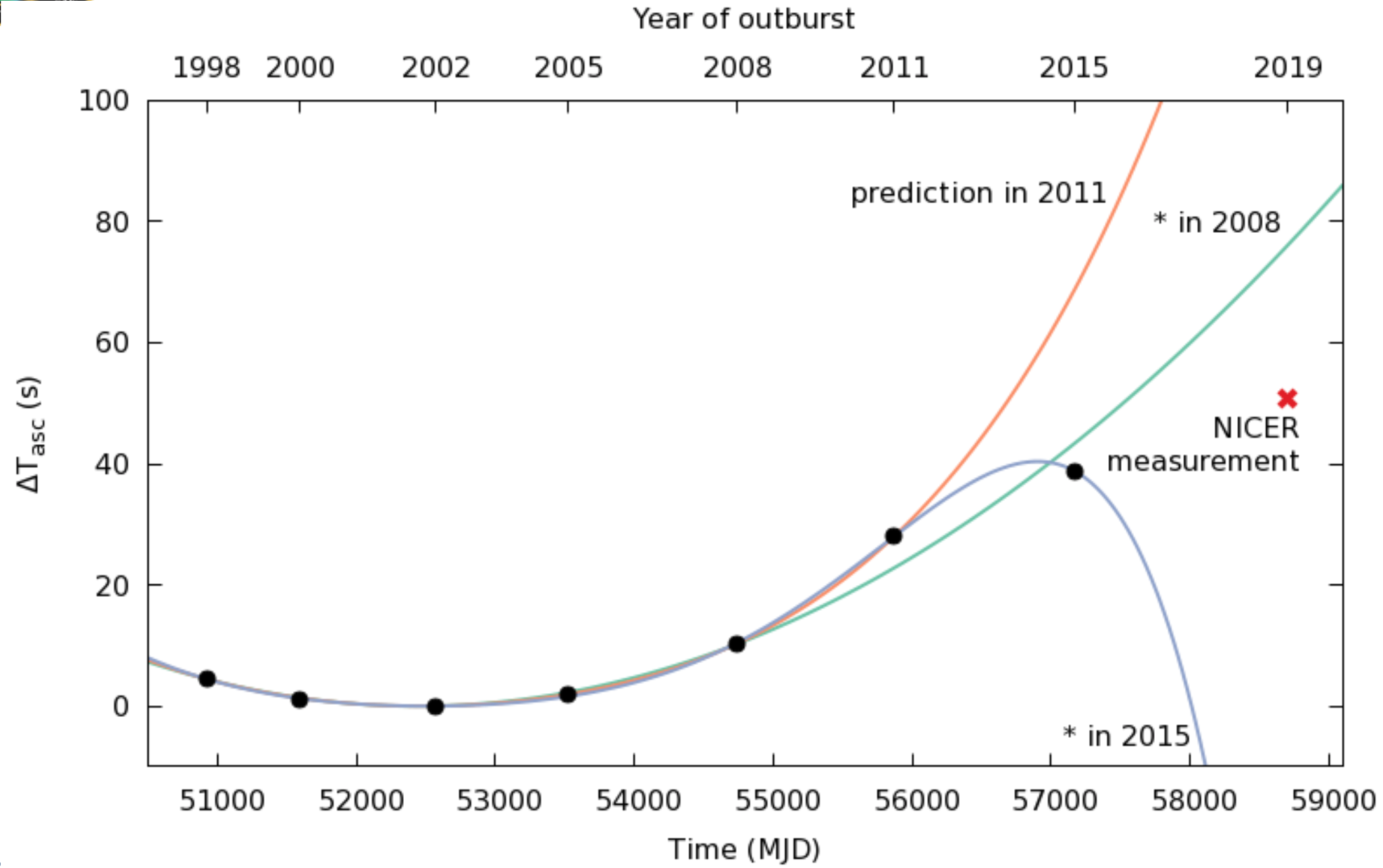NICER / ISS Science Nugget
for August 8, 2019
NICER tracks a new outburst from SAX J1808.4-3658
First discovered in 1996, the neutron star binary system SAX J1808.4-3658 is an iconic X-ray transient. Roughly every four
years this source lights up in the X-ray sky, and during its three-week epochs of activity our X-ray, radio, and optical
telescopes stare at this uniquely powerful laboratory of accretion processes, dense matter physics, and strong field
gravity. And after more than two decades of coverage, we still learn something new every time.
On June 30, 2019, initial reports emerged that SAX J1808 was stirring, but for the following week most wavebands remained
silent. On August 7, 2019, however, NICER detected increased X-ray emission from the direction of SAX J1808. We promptly
established that this emission was modulated at exactly 2.49 milliseconds – the known rotation period of this pulsar
– thereby confirming without a doubt that we are at the start of a new outburst cycle.

Figure:
Shown here is the evolution of the binary period of SAX J1808.4-3658 over 2 decades.
The vertical axis gives the measured time delay of a fiducial point in the orbit
with respect to a prediction based on constant orbital period. A parabolic curve
then indicates that the orbit is changing at a constant pace.
These measurements, however, are clearly not
parabolic, and show that something more complex is at play.
What we have already learned from these NICER observations is that the binary orbit of SAX J1808 is very peculiar (see
figure). The binary orbit of a system like SAX J1808 is supposed to change slowly – over billions of years. In reality,
however, the orbital period is evolving much more rapidly. The previous two outbursts (in 2011 and 2015) presented a
particularly stange puzzle: the orbit seemed to rapidly expand, only to then quickly contract again. What happened here?
What can drive these rapid variations? Are they predictable or random? By more clearly establishing the long term trend,
NICER might now be able to shed some light on these questions.
<< Previous
Main Index
Next >>